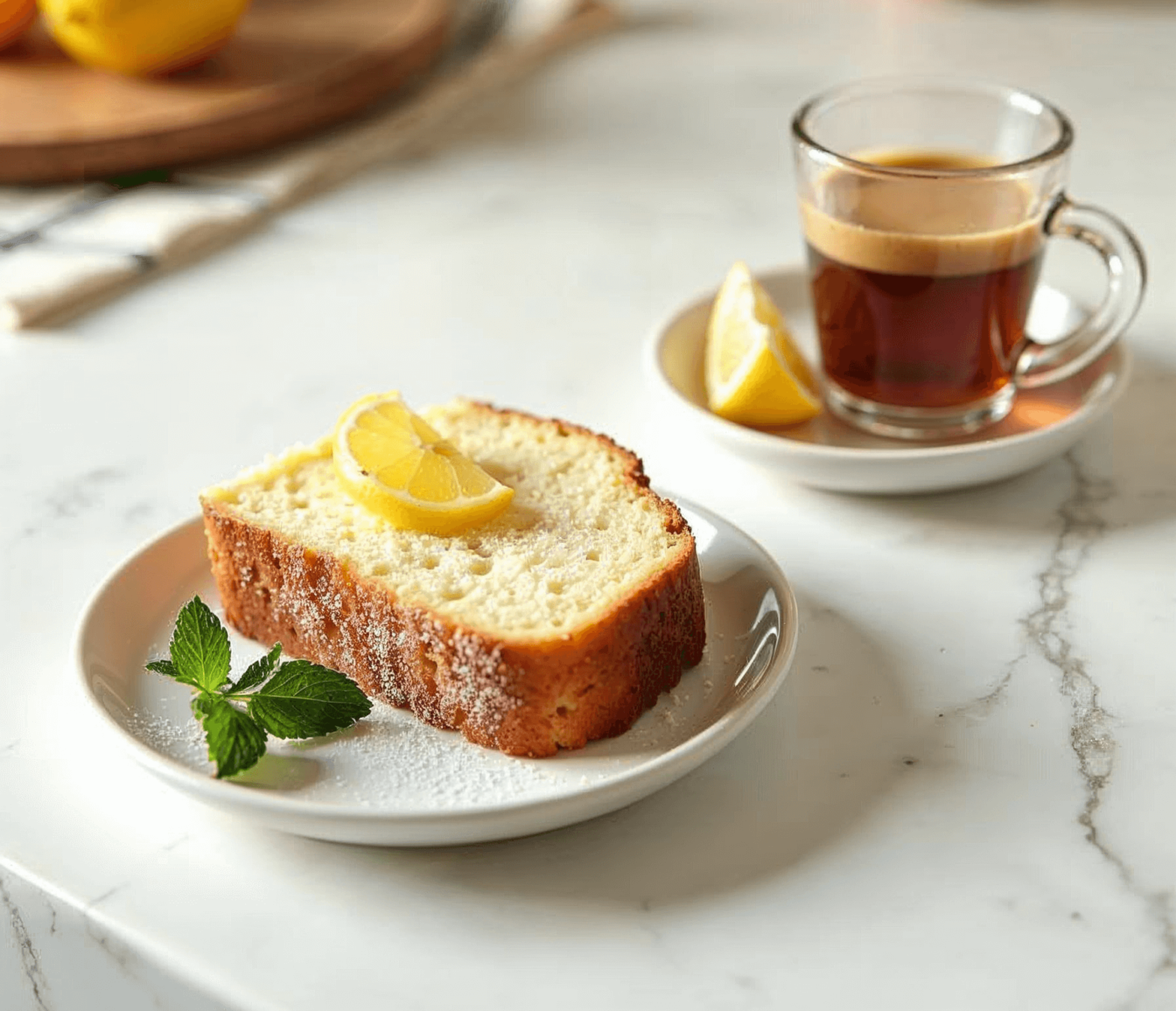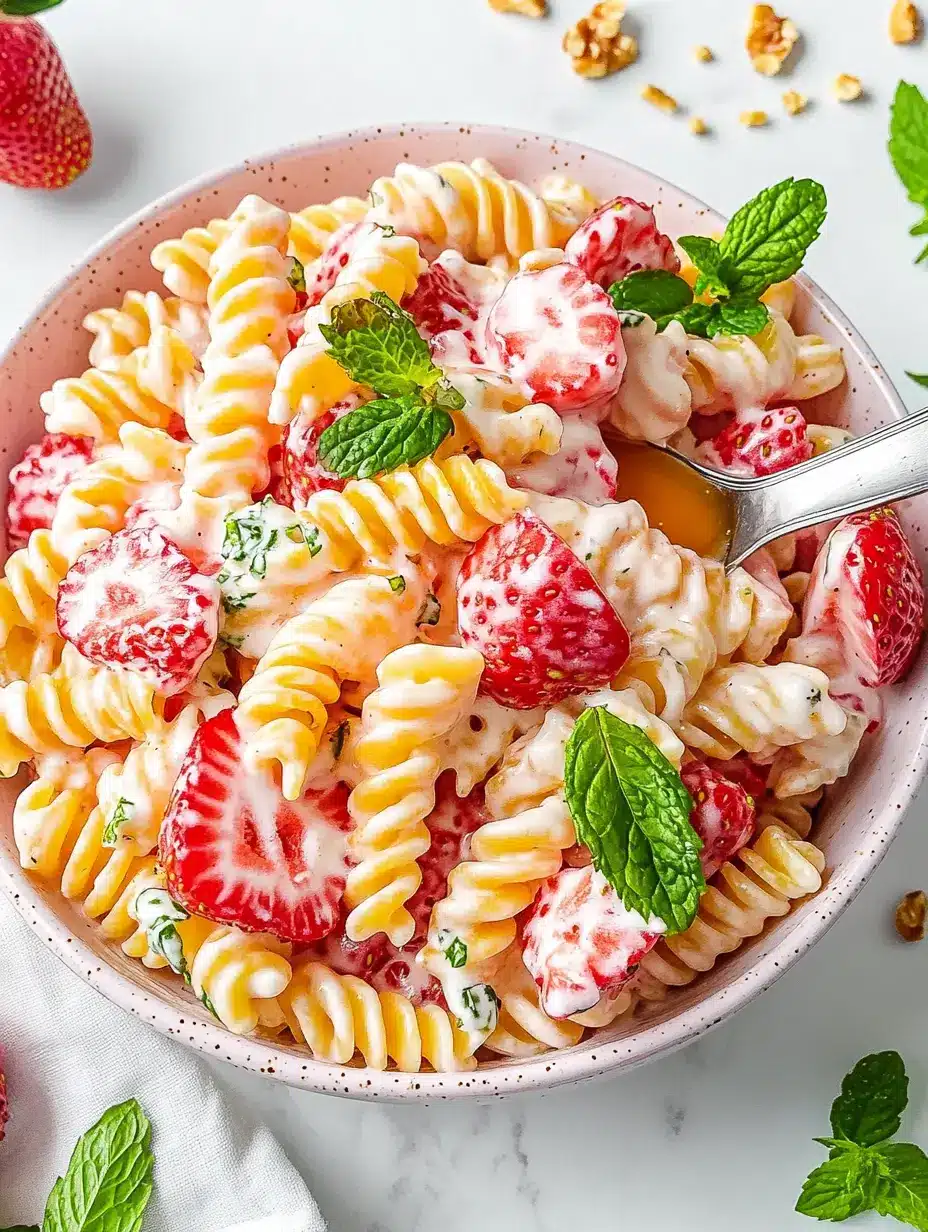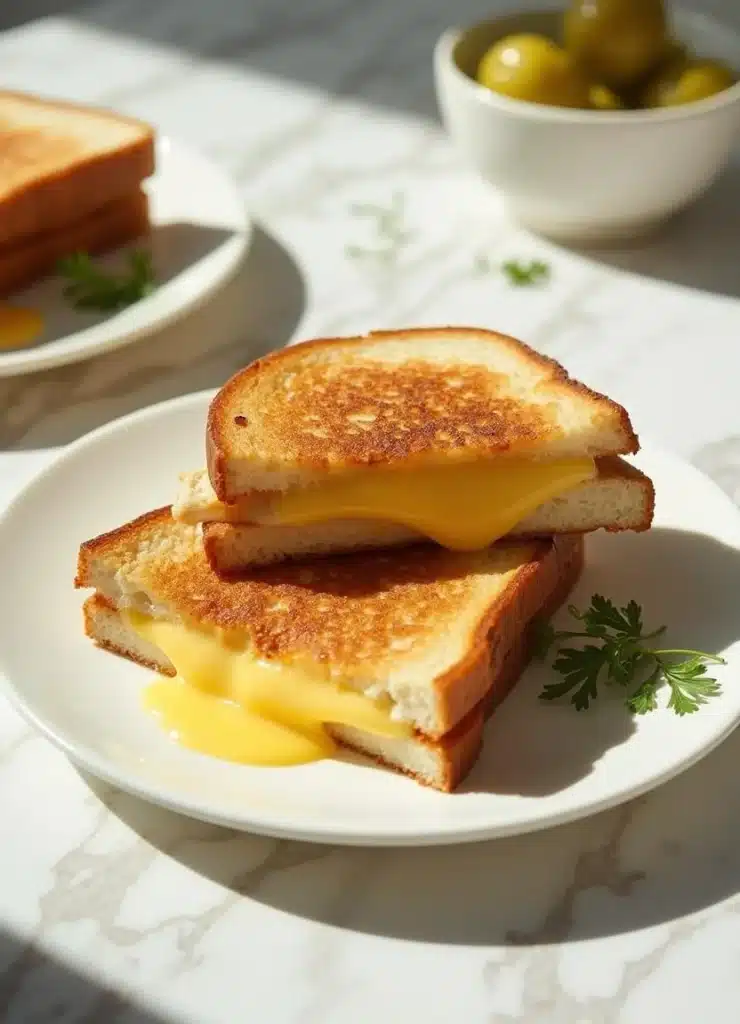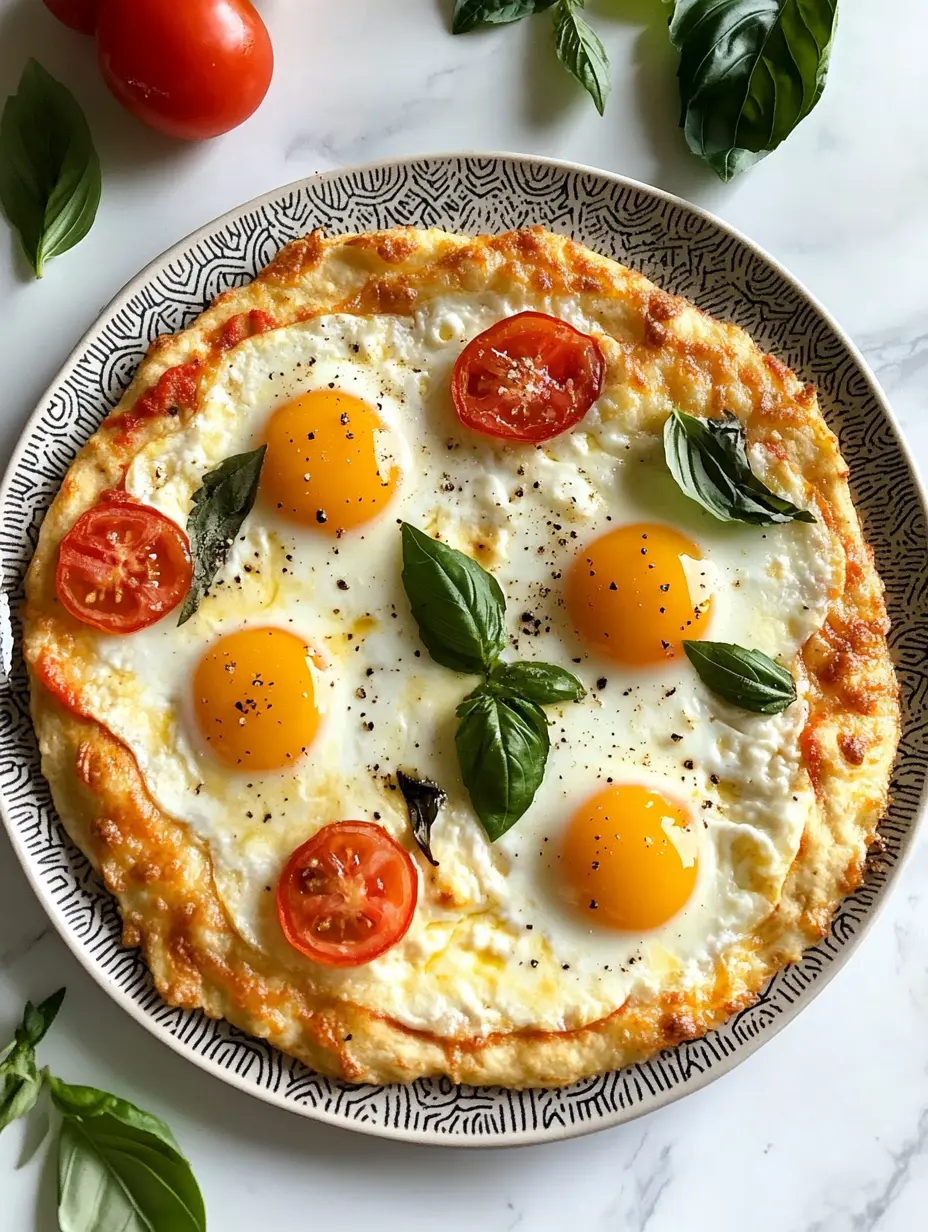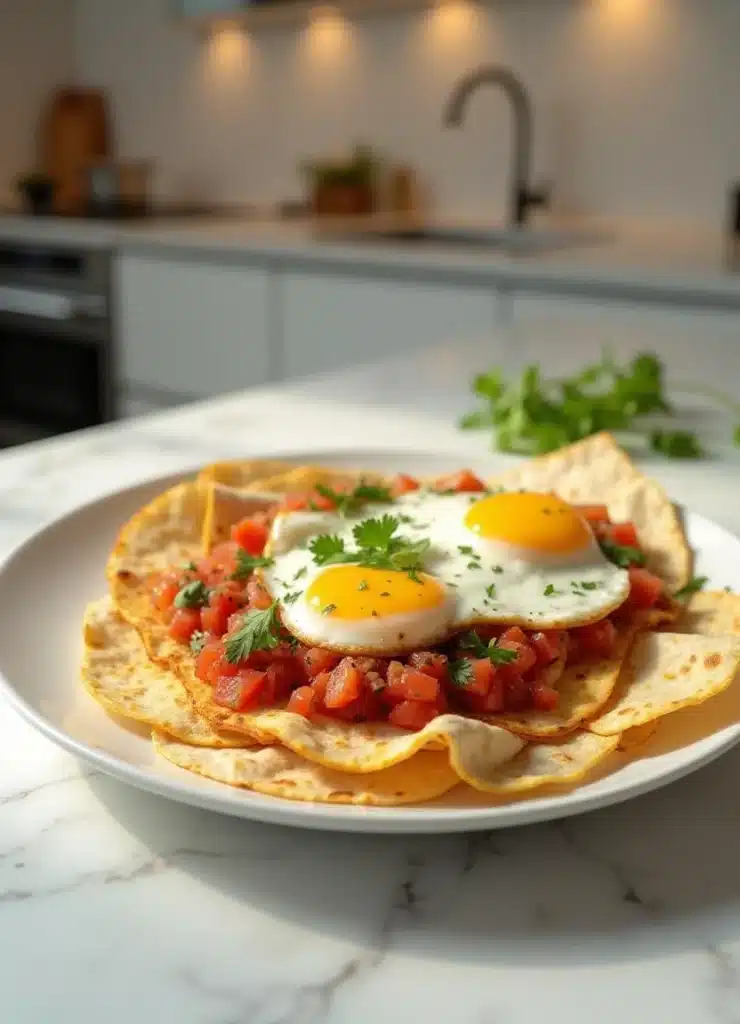Welcome back to KlikRecipes! If you love comforting, customizable meals that bring people together, you’re going to fall in love with today’s star: the garbage bread recipe. Don’t let the name fool you—it’s not trash, it’s a treasure. This stuffed bread roll is packed with flavor, fun, and just the right amount of indulgence.
We’re diving deep into what makes garbage bread so irresistible—from the best dough to use, to mouthwatering filling combos, make-ahead tips, freezing tricks, and how to store and reheat it like a pro. And yes, I’ll answer the big question: Why on earth is it called “garbage” bread?
Whether you’re feeding a crowd or just craving something savory and satisfying, this recipe’s got you covered. Let’s unwrap the delicious story behind garbage bread—and bake some love into every slice.
Check out our favorite bread recipes for more baking inspiration: Discover great ideas like this one.
Print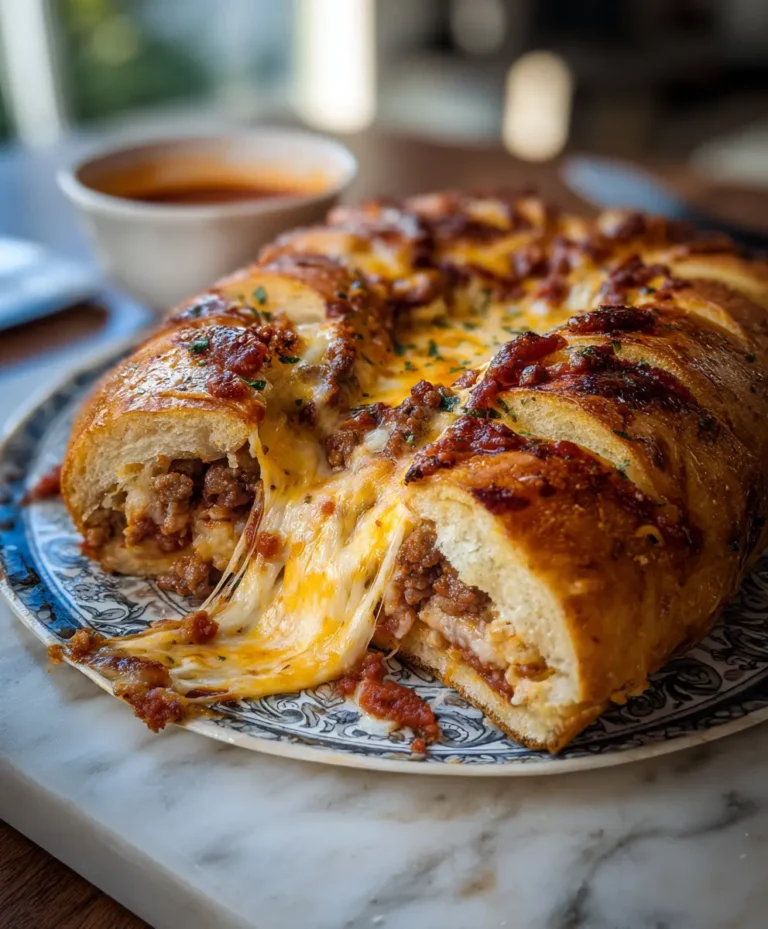
Garbage Bread Recipe — The Ultimate Guide to Savory, Stuffed Bread
A customizable, comforting stuffed bread roll filled with meats, cheeses, sauces, and veggies. Perfect for leftovers, game nights, and hearty cravings.
- Total Time: 45 minutes
- Yield: 6 servings 1x
Ingredients
- 1 lb pizza dough (store-bought or homemade)
- 1 lb ground beef or sausage (cooked and seasoned)
- 1½ cups shredded mozzarella cheese
- ½ cup cheddar cheese
- ½ cup marinara or pizza sauce
- 1 tsp Italian seasoning
- 1 egg (for egg wash)
Instructions
- Preheat oven to 375°F (190°C). Line a baking sheet with parchment paper.
- Roll out the dough into a large rectangle (about 10×15 inches).
- Spread the sauce evenly, leaving a 1-inch border around the edges.
- Layer on the cooked meat, followed by cheese and seasonings.
- Roll it up tightly like a jelly roll, starting from the long edge.
- Seal the seam and ends by pinching the dough, then place seam-side down on the baking sheet.
- Brush with egg wash to get that golden crust.
- Bake for 25–30 minutes, or until golden brown and cooked through.
- Cool slightly, slice, and serve warm!
Notes
Let fillings cool before rolling. Use parchment paper for easy rolling and sealing. Don’t overfill to avoid leaks or sogginess. Can be prepped ahead or frozen raw/baked for convenience.
- Prep Time: 15 minutes
- Cook Time: 30 minutes
- Category: Main Dish
- Method: Baked
- Cuisine: American
Nutrition
- Serving Size: 1 slice
- Calories: 420
- Sugar: 4g
- Sodium: 780mg
- Fat: 24g
- Saturated Fat: 10g
- Unsaturated Fat: 12g
- Trans Fat: 0g
- Carbohydrates: 30g
- Fiber: 2g
- Protein: 20g
- Cholesterol: 80mg
Keywords: garbage bread, stuffed bread, stromboli, leftovers, savory roll
Table of Contents
What Is Garbage Bread?
The Surprising Story Behind Garbage Bread
The name might make you pause, but trust me—garbage bread is one of the most delightful, crowd-pleasing meals you’ll ever pull out of your oven. The term “garbage” doesn’t mean it’s made from trash. Instead, it’s all about tossing in whatever savory goodness you’ve got on hand. Think of it as a delicious way to use up leftovers, create something hearty, and make your whole kitchen smell amazing.
Born from humble roots, this stuffed bread roll has been a family favorite in many American homes. Whether you grew up calling it “garbage bread,” “stromboli,” or “stuffed loaf,” the idea’s the same: take some dough, layer in flavorful fillings like ground beef, cheese, pepperoni, or veggies, roll it all up, and bake until golden and bubbling.
What Makes a Bread a Garbage Bread?
What separates a garbage bread recipe from other savory rolls is its free-form, no-rules attitude. There’s no strict formula. You can start with pizza dough, crescent dough, or even puff pastry. The inside? Totally up to you.
Here’s what most garbage bread recipes include:
| Element | Common Options |
|---|---|
| Dough | Pizza dough, homemade bread dough, crescent rolls |
| Fillings | Ground beef, sausage, pepperoni, shredded chicken |
| Cheese | Mozzarella, cheddar, provolone, pepper jack |
| Sauces | Marinara, ranch, BBQ, Alfredo |
| Extras | Onions, peppers, olives, spinach, mushrooms |
The beauty of this dish is that it’s both a leftover makeover and a customizable canvas. Whether you’re emptying the fridge before grocery day or planning a cozy game night treat, garbage bread lets you get creative with what you’ve got.
Looking for inspiration? Try this easy weeknight family recipe on KlikRecipes: Don’t miss our top-rated comfort food dishes.
What Kind of Dough Works Best for Garbage Bread?
Choosing the Right Dough: Your Bread’s Foundation
When it comes to a great garbage bread recipe, the dough isn’t just a vessel—it’s part of the magic. It needs to be sturdy enough to hold all those delicious fillings, but soft and golden when baked. So, what dough should you use?
The most popular choice is pizza dough—homemade or store-bought. It’s elastic, easy to roll, and bakes into a chewy, golden crust. But you don’t have to stop there. Many home cooks also reach for crescent dough, French bread dough, or even puff pastry for a lighter, flakier texture.
Let’s break it down:
| Dough Type | Texture & Taste | Best For |
|---|---|---|
| Pizza Dough | Chewy, golden, hearty | Traditional garbage bread recipes |
| Crescent Roll Dough | Buttery, soft, slightly sweet | Breakfast or kid-friendly versions |
| French Bread Dough | Crusty exterior, airy interior | Meat-heavy or rustic fillings |
| Puff Pastry | Flaky, light, crisp | Elegant or party-style variations |
Each brings a different vibe to your garbage bread—so choose what fits your mood (and your fridge).
Tips for Dough Success
Whether you’re making your own or using a shortcut from the store, here are a few dough tips to keep your garbage bread golden and glorious:
- Room temperature is key: Cold dough tears easily. Let it sit out for 20–30 minutes before rolling.
- Roll it thin, but not too thin: Aim for about ¼ inch thick to avoid a soggy center or bursting sides.
- Don’t overload it: Too much filling can make it hard to seal and lead to leaks.
- Seal the edges well: Use water or a little egg wash to close the seams tightly.
Discover great ideas like this with our easy homemade pizza dough guide, perfect for garbage bread and more.
How to Make a Garbage Bread Recipe
The Classic Garbage Bread Method Step-by-Step
Alright, it’s time to get baking. If you’ve never made a garbage bread recipe before, don’t worry—it’s easier than you think. Think of it like a giant savory roll, filled with whatever makes your taste buds sing.
Here’s a basic version to get you started. It’s hearty, cheesy, and packed with flavor.
Ingredients:
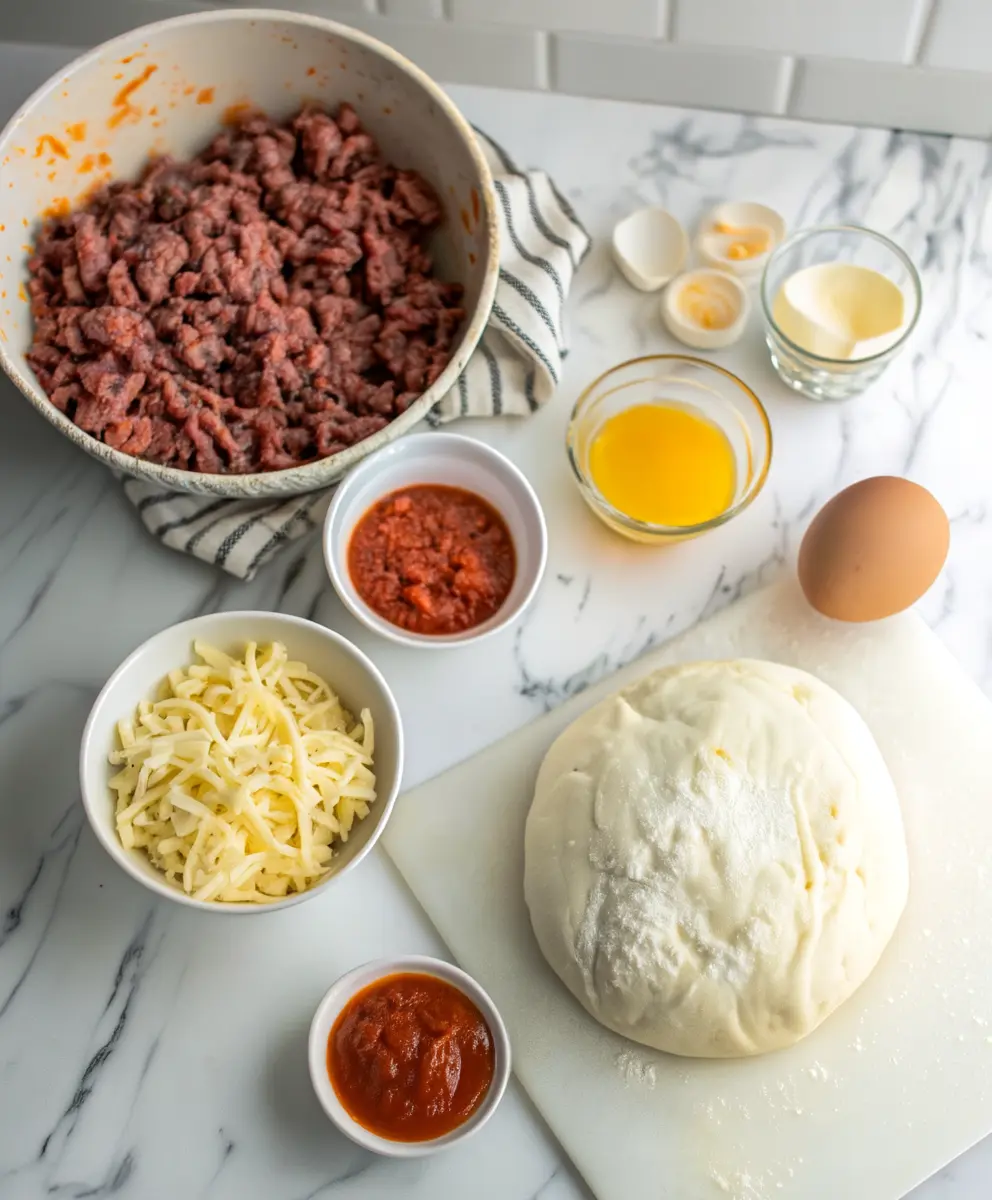
- 1 lb pizza dough (store-bought or homemade)
- 1 lb ground beef or sausage (cooked and seasoned)
- 1½ cups shredded mozzarella cheese
- ½ cup cheddar cheese
- ½ cup marinara or pizza sauce
- 1 tsp Italian seasoning
- 1 egg (for egg wash)
Instructions:
- Preheat oven to 375°F (190°C). Line a baking sheet with parchment paper.
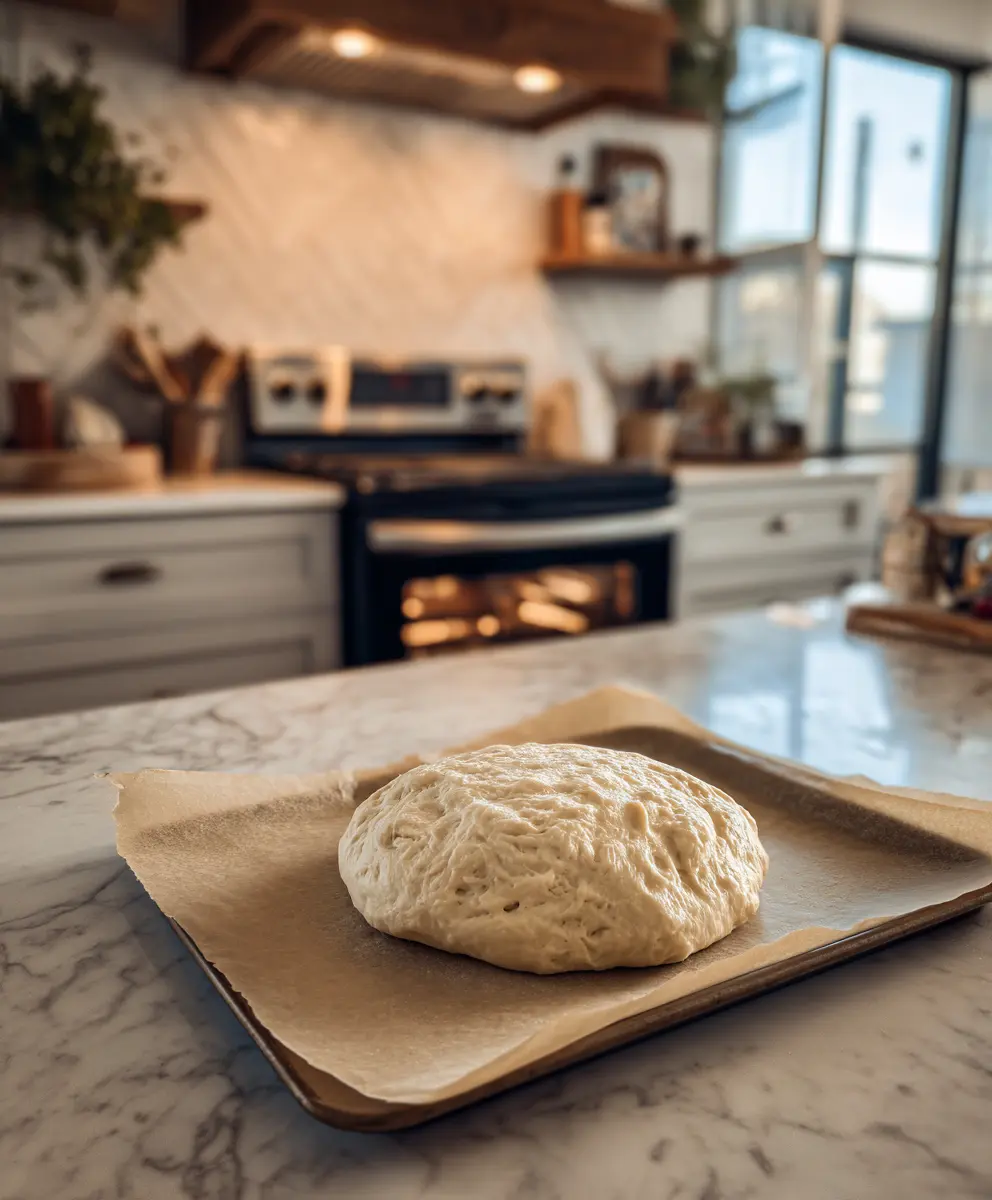
- Roll out the dough into a large rectangle (about 10×15 inches).
- Spread the sauce evenly, leaving a 1-inch border around the edges.
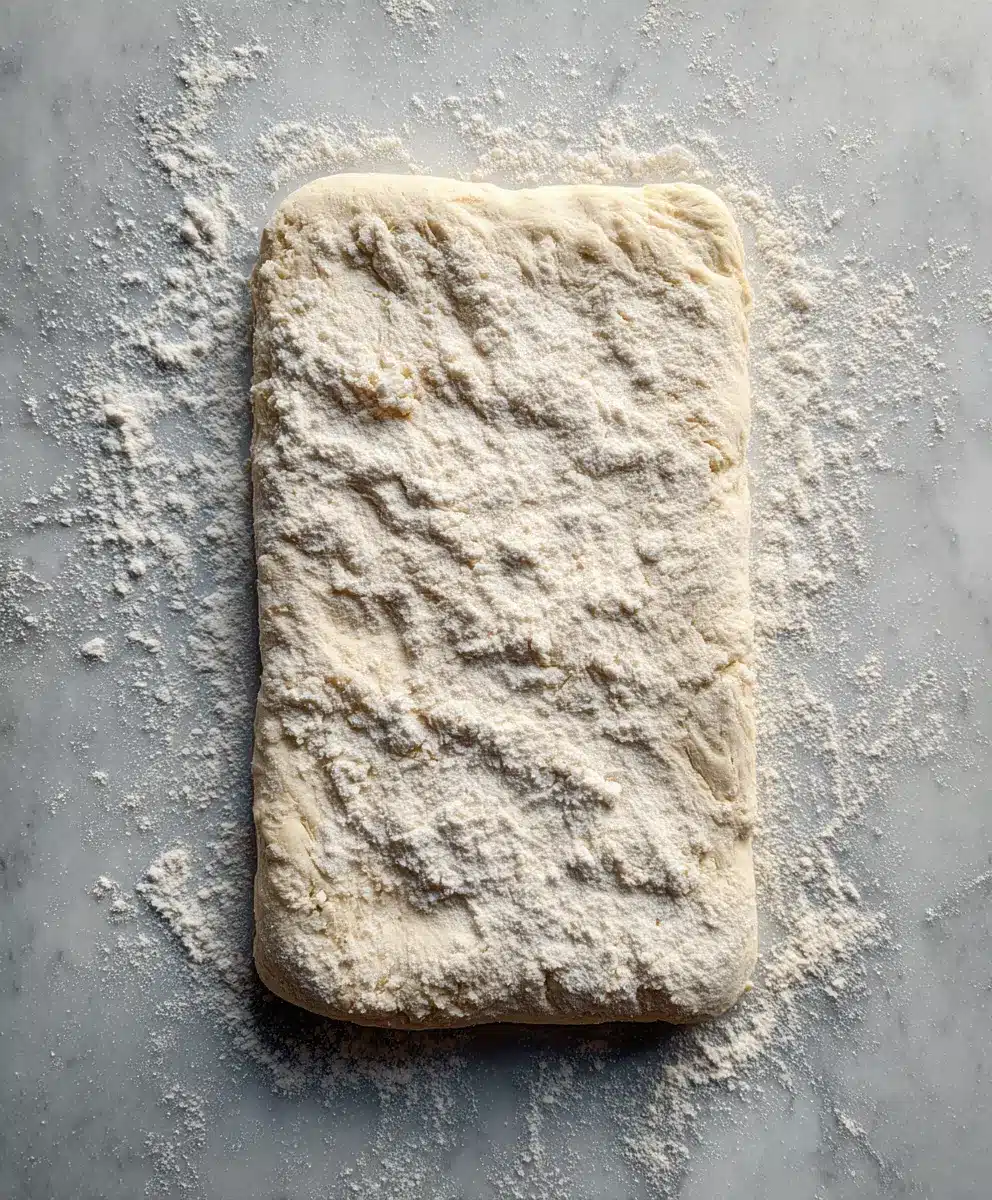
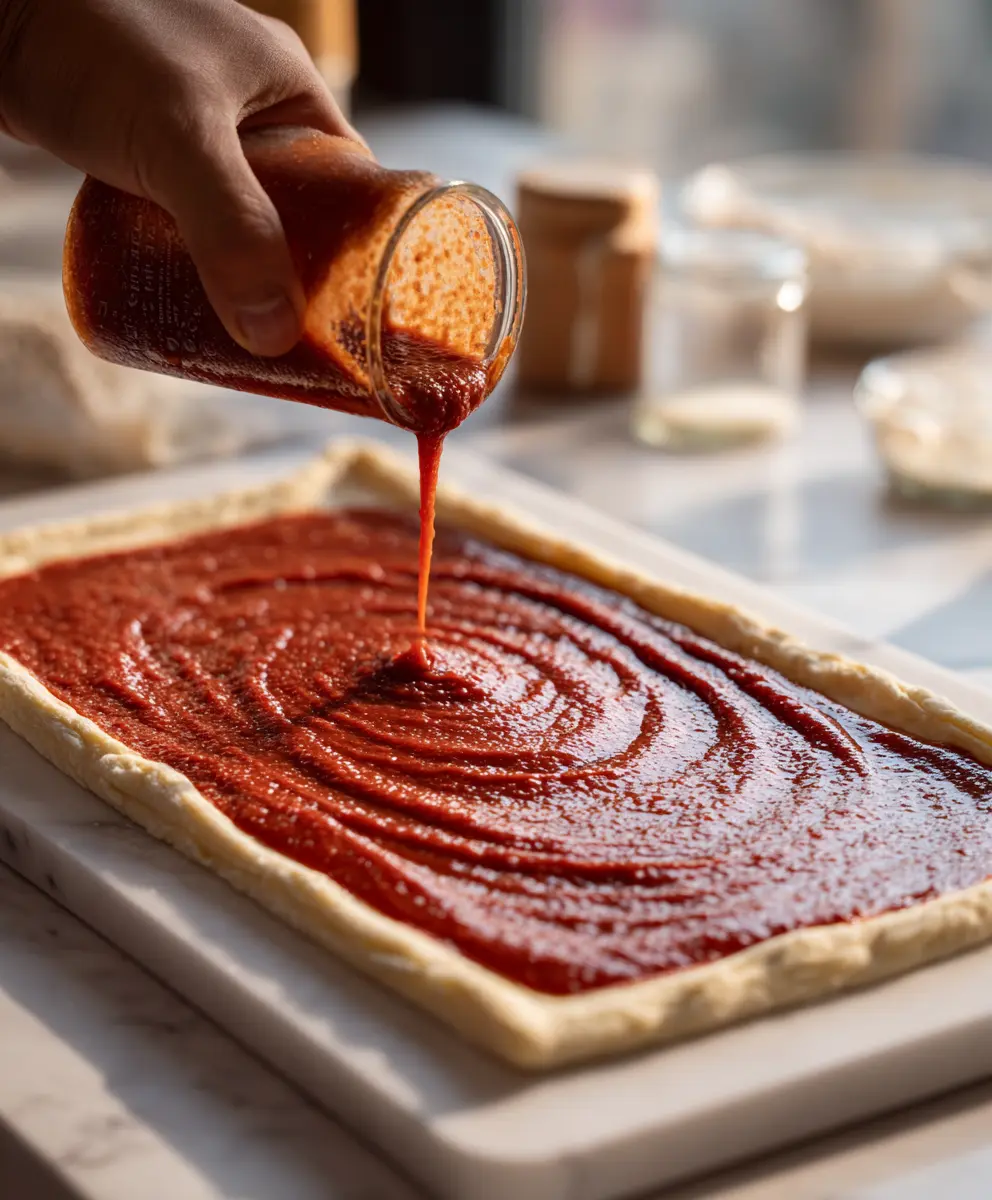
- Layer on the cooked meat, followed by cheese and seasonings.
- Roll it up tightly like a jelly roll, starting from the long edge.
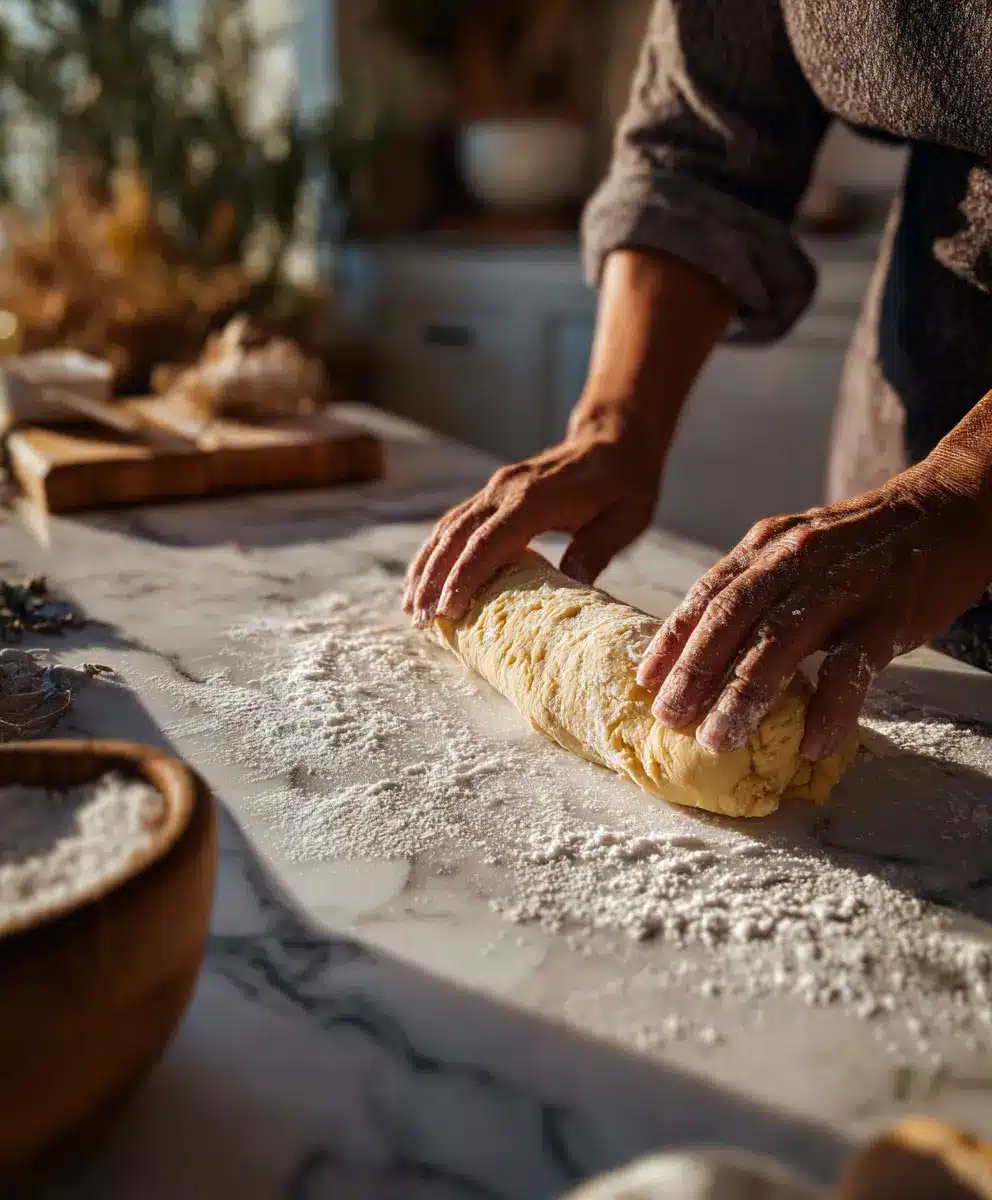
- Seal the seam and ends by pinching the dough, then place seam-side down on the baking sheet.
- Brush with egg wash to get that golden crust.
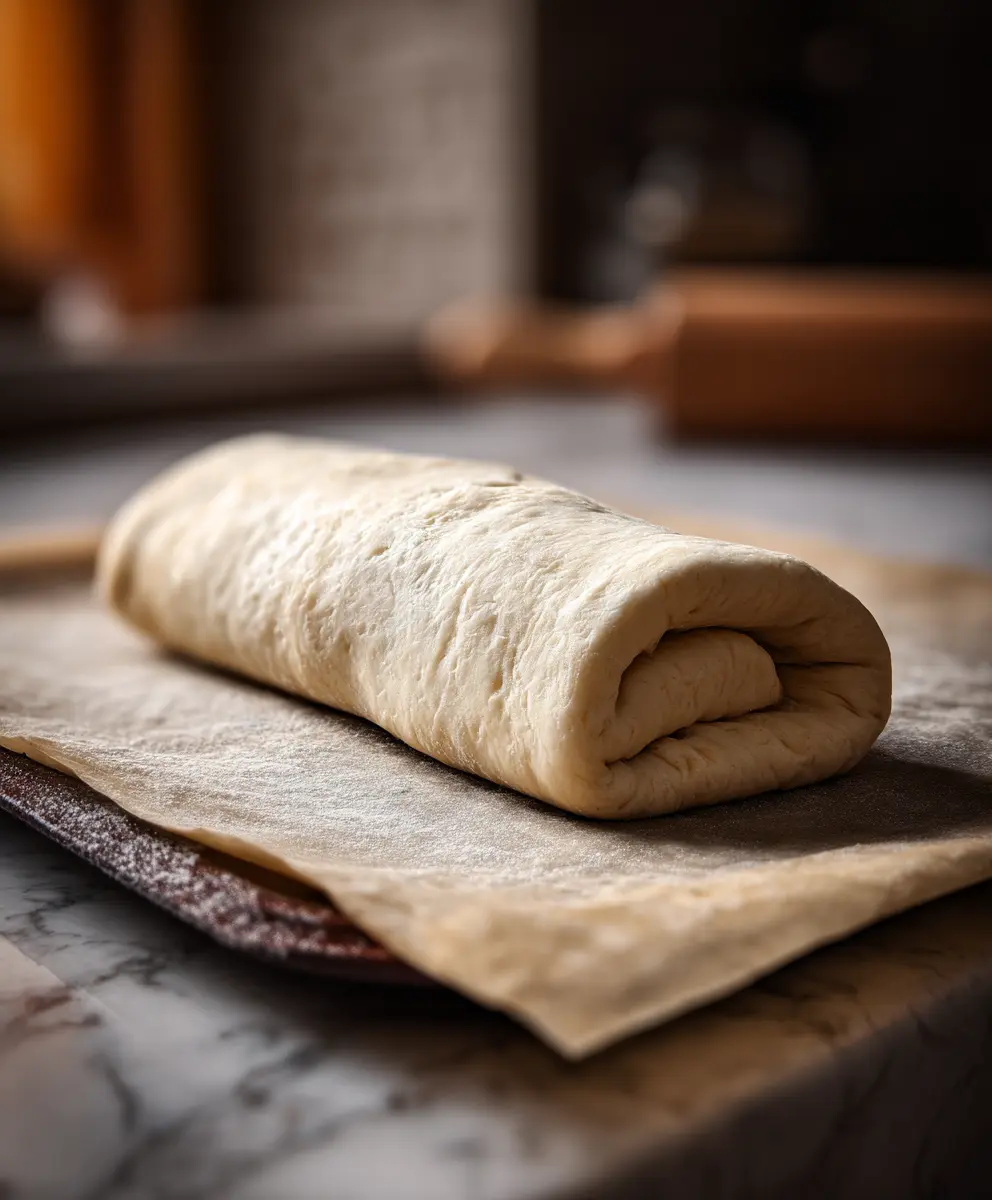
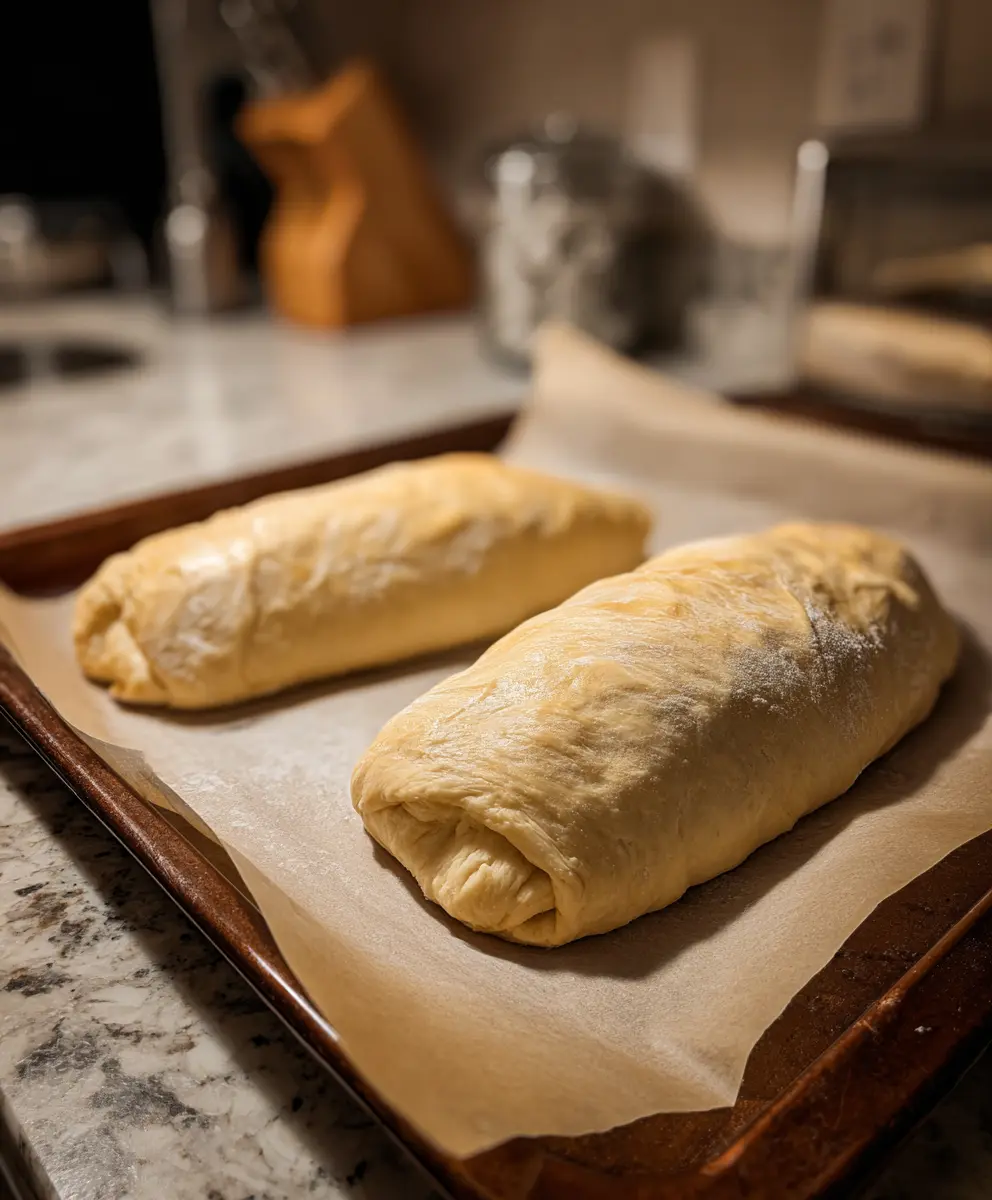
- Bake for 25–30 minutes, or until golden brown and cooked through.
- Cool slightly, slice, and serve warm!
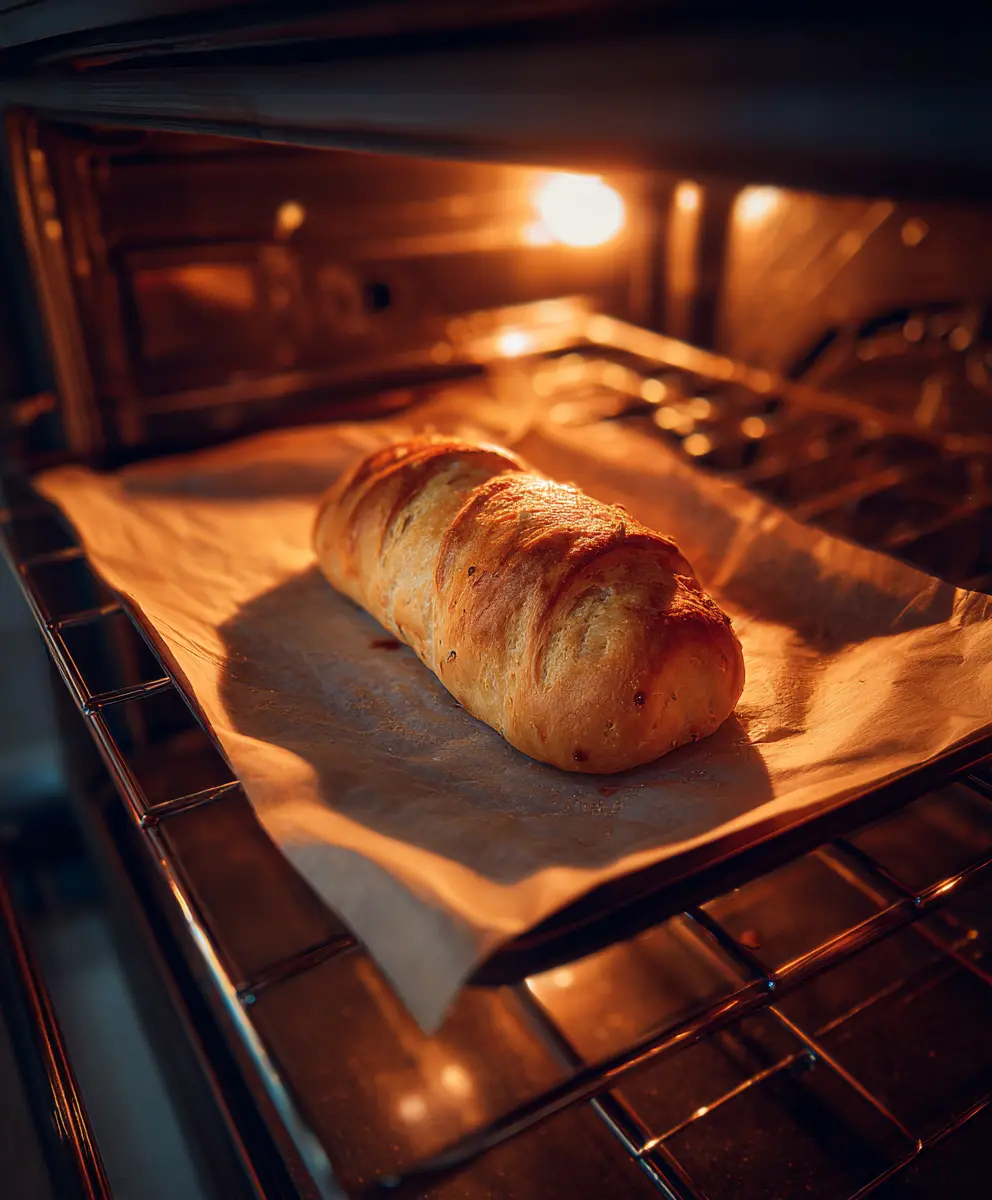
How to Roll and Bake Garbage Bread Like a Pro
A few tips I’ve learned after dozens of loaves:
- Let fillings cool before rolling: Hot fillings can make the dough soggy.
- Don’t roll too tight: Leave a bit of space so the dough can rise and cook through.
- Slash the top: A few small slits let steam escape and prevent blowouts.
- Bake on a rack: Placing the bread on a wire rack after baking keeps the bottom crisp.
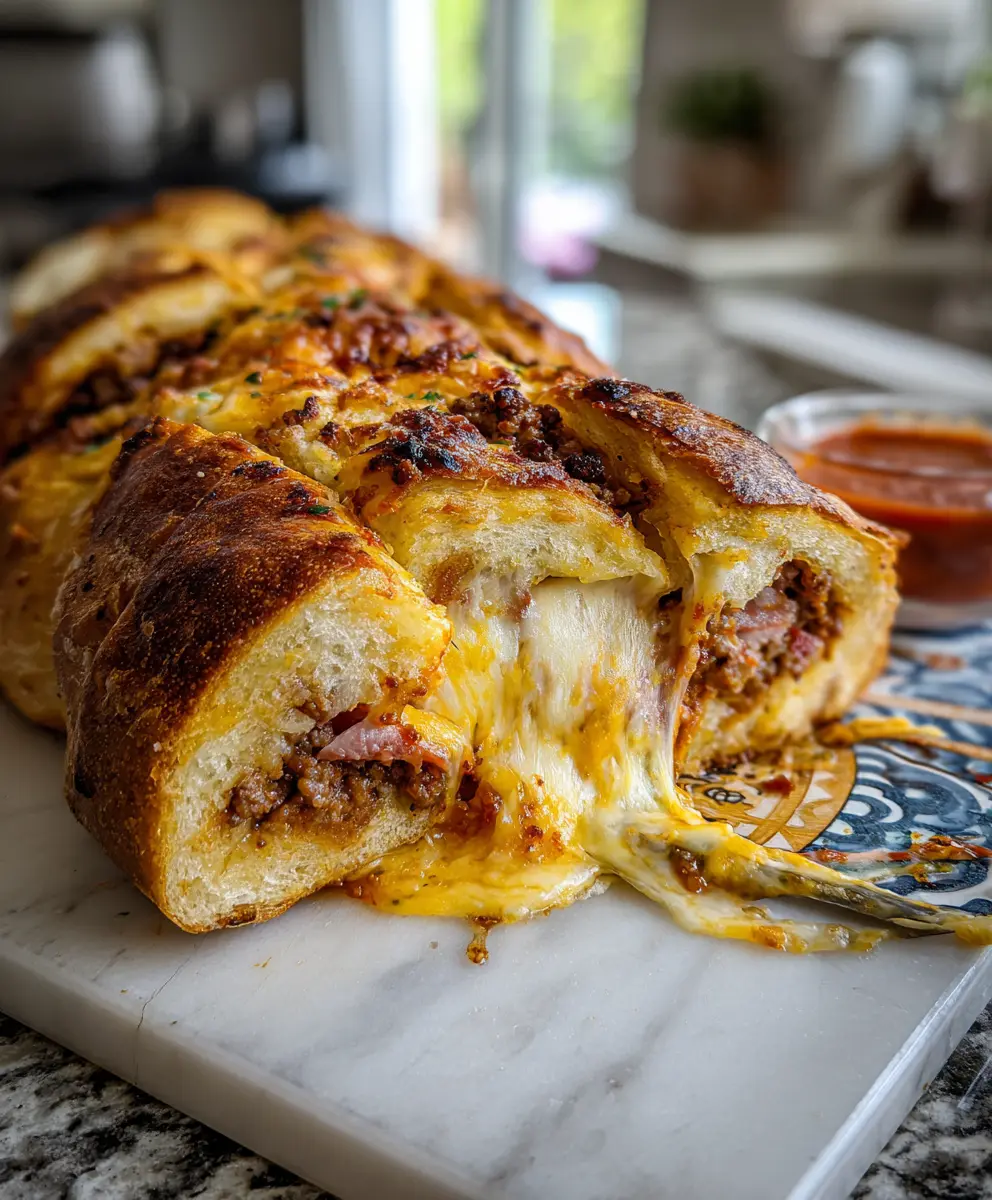
Don’t miss our other stuffed bread creations for more inspiration: Check out KlikRecipes’ savory rolls collection.
Popular Fillings & Variations for Garbage Bread
Classic Garbage Bread Fillings That Never Fail
The beauty of a garbage bread recipe is how versatile it is—you can fill it with almost anything you love. Still, over time, a few crowd favorites have stood the test of ovens and tastebuds.
Here are some go-to combinations that folks keep coming back to:
| Name | Filling Combo |
|---|---|
| Cheeseburger Bread | Ground beef, cheddar, pickles, ketchup, mustard |
| Italian Deli Roll | Salami, ham, pepperoni, provolone, banana peppers |
| Pepperoni Pizza Bread | Mozzarella, pepperoni, pizza sauce, oregano |
| Philly Cheesesteak Bread | Steak strips, sautéed onions & peppers, provolone |
| Buffalo Chicken Bread | Shredded chicken, buffalo sauce, blue cheese |
These combos are comfort food royalty—savory, satisfying, and perfect for game days or movie nights.
Creative Twists & Dietary-Friendly Variations
Garbage bread isn’t just a meaty indulgence—it can easily go light, spicy, or veggie-packed, depending on your needs or mood. Let’s explore some fresh takes.
Vegetarian Garbage Bread
Who says meat gets all the fun? Try:
- Spinach, artichoke, and mozzarella
- Roasted veggies with feta and pesto
- Black beans, corn, and pepper jack
Low-Carb or Gluten-Free Options
Use almond flour dough or low-carb wraps as a base. Fill with grilled chicken, low-fat cheese, and veggies.
Breakfast Garbage Bread
Yes, breakfast! Try:
- Scrambled eggs, bacon, cheddar, and salsa
- Sausage, hash browns, and gravy
- Spinach, mushroom, and goat cheese
Garbage bread is a blank canvas. Once you get the technique down, you’ll find yourself dreaming up endless variations. It’s also a great way to use up those little odds and ends in your fridge.
Can I Make Garbage Bread Ahead or Freeze It?
Yes, You Can Absolutely Make Garbage Bread Ahead!
One of the best things about a garbage bread recipe is how well it fits into busy family life. Whether you’re prepping for a party, planning meals for the week, or just love having something ready to pop in the oven, garbage bread has your back.
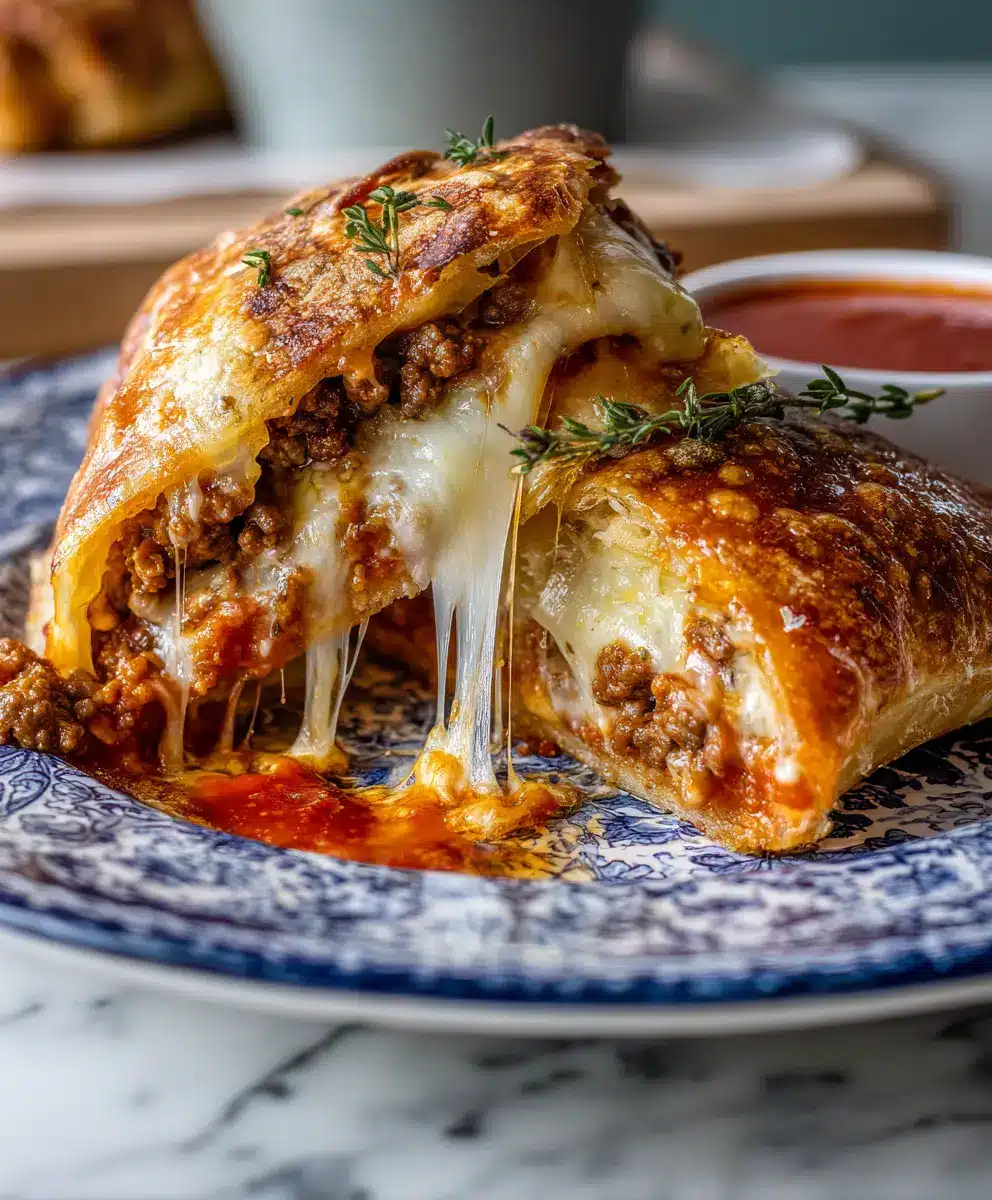
Here are two easy prep-ahead options:
Option 1: Prep and Refrigerate (Bake Later)
You can assemble your garbage bread (roll it, seal it, and wrap it) up to 24 hours ahead of time.
- Wrap it tightly in plastic wrap or foil.
- Store it in the fridge until ready to bake.
- Let it sit at room temperature for 15–20 minutes before popping it in the oven.
Option 2: Bake and Reheat Later
If you’ve already baked the loaf, let it cool completely, then wrap and refrigerate. It will keep well for up to 3–4 days and reheat beautifully.
Check out our easy make-ahead freezer meals for busy weeknights just like this.
How to Freeze Garbage Bread (Raw or Baked)
Whether raw or baked, garbage bread freezes like a dream. Here’s how:
To Freeze Before Baking:
- Assemble your bread but do not bake it.
- Wrap it tightly in plastic wrap and then in foil.
- Label and freeze for up to 3 months.
- When ready, thaw in the fridge overnight, then bake as usual.
To Freeze After Baking:
- Let the bread cool completely.
- Wrap individual slices or the whole loaf in foil.
- Place in a freezer-safe bag and label.
- Reheat in the oven at 350°F for 15–20 minutes (covered with foil), or until warmed through.
Freezing tip: Avoid freezing fillings with high moisture (like fresh tomatoes or raw mushrooms), as they can make the dough soggy.
Looking for inspiration? Try our family freezer-friendly dinners to batch-cook with love.
How to Store Leftovers & Reheat Garbage Bread
Keeping Garbage Bread Fresh: Storage Tips
Let’s be honest—if there are leftovers, you’ve shown serious restraint. But just in case, knowing how to properly store garbage bread will keep it tasting fresh, even days later.
Here’s how to do it right:
In the Fridge:
- Let the bread cool completely before wrapping.
- Wrap tightly in foil or plastic wrap to avoid drying out.
- Store in an airtight container if sliced.
- Stays fresh for up to 4 days.
In the Freezer (Post-Bake):
- Wrap either the whole loaf or separate slices in aluminum foil.
- Transfer them into a zip-top freezer-safe bag.
- Add a label with the date and freeze for up to three months.
- Perfect for convenient lunches or on-the-go snacks later.
Looking for inspiration? Try our Dessert that reduce waste and boost flavor.
Best Ways to Reheat Garbage Bread
No matter if it’s the second day or three months later, garbage bread warms up wonderfully. The key is to maintain that crunchy outer layer while keeping the inside moist and tender.
Oven Method (Best Overall):
- Preheat oven to 350°F.
- Wrap slices or whole loaf in foil.
- Bake for 10 to 15 minutes, or until it’s fully heated.
Air Fryer Method (Crispy Outside):
- Preheat to 330°F.
- Place slices directly in the basket.
- Heat for 5–8 minutes.
Microwave (Quick but Soft):
- Wrap the slice in a slightly damp paper towel.
- Heat for 30–60 seconds.
- Best for speed, not texture.
Pro tip: For extra flavor, serve with a side of warm marinara or ranch for dipping. It gives day-old bread new life!
Don’t miss our handy guide on how to reheat anything without ruining it.
Why It’s Called “Garbage” Bread
The Name Might Sound Strange, But the Meaning Is Delicious
If you’ve ever wrinkled your nose at the name garbage bread, you’re not alone. But don’t worry—there’s no trash involved! The name actually comes from a place of love, creativity, and practicality in the kitchen.
The idea is simple: you open your fridge, grab a little of this and a little of that—maybe last night’s taco meat, leftover grilled veggies, or half a block of cheese—and you toss it all in the bread. You’re not using literal garbage. You’re using the odds and ends that might otherwise go to waste.
That’s the beauty of a garbage bread recipe: it’s flexible, affordable, and zero-stress.
A Peek Into the Name’s Origins
While it’s tough to pinpoint exactly where the name started, garbage bread is often compared to stromboli or calzones. But unlike those, which typically have specific fillings, garbage bread has no rules. That’s what makes it so fun.
It likely gained its name in home kitchens, where creative cooks used the phrase lovingly to describe these packed, savory rolls full of “whatever we’ve got.” Over time, social media embraced the term, and now it’s a trending comfort food that’s both nostalgic and endlessly customizable.
So, next time someone raises an eyebrow at the name, you can proudly say: “It’s not garbage. It’s genius.”
Check out our other creative recipe names that make people smile—because food should be fun and flavorful.
Troubleshooting & Expert Tips for Perfect Garbage Brea
Common Garbage Bread Mistakes (and How to Avoid Them)
Even though a garbage bread recipe is super forgiving, a few sneaky issues can pop up—especially the first couple of times you make it. Don’t worry, I’ve been there too.
Let’s go through the most common hiccups and how to fix them:
| Problem | Why It Happens | How to Fix It |
|---|---|---|
| Filling leaks out | Dough wasn’t sealed tightly | Pinch edges firmly and seal with water or egg wash |
| Soggy or undercooked inside | Filling was too wet or bread was too thick | Drain moisture from ingredients and roll dough thinner |
| Burnt crust, raw center | Oven too hot or baking too short | Bake at 375°F and check doneness at center before slicing |
| Dough tears while rolling | Dough too cold or overfilled | Let dough warm to room temp; don’t overstuff |
| Flat or collapsed bread | Not enough structure from dough or overhandling | Use sturdy dough and handle gently |
If your first loaf isn’t perfect, that’s okay—garbage bread is all about learning, adjusting, and making it your own. Trust your senses, and let the dough guide you.
Anna’s Tips for Garbage Bread Success
Here’s what I’ve learned over years of rolling and baking:
- Use parchment paper for easy rolling and clean transfer to the baking sheet.
- Cool your fillings before assembling—hot ingredients steam the dough from inside.
- Add extra cheese around the edges for a gooey, crispy finish.
- Brush with garlic butter right after baking for that golden shine and flavor pop.
- Let it rest 5–10 minutes before slicing so the fillings stay put.
One of my favorite combos? Crumbled bacon, sautéed spinach, and creamy Havarti cheese. It’s unexpected, but oh-so-good.
Got Questions About Garbage Bread? We’ve Got Answers
Garbage bread is a savory rolled bread stuffed with meats, cheeses, sauces, and veggies—basically, anything delicious you have on hand. It’s similar to a stromboli but with fewer rules and more creativity. You roll it up like a jelly roll, bake it until golden and bubbly, then slice and serve. The name comes from the idea of using “whatever you’ve got”—not actual garbage, of course!
Pizza dough is the go-to choice for most garbage bread recipes because it’s easy to roll, seals well, and bakes into a chewy, golden crust. Crescent dough, puff pastry, or even bread dough also work if you want different textures. The key is using dough that holds up well to fillings without getting soggy or tearing.
Absolutely! You can assemble garbage bread up to a day ahead and store it unbaked in the fridge. It also freezes well—either raw or baked. Just wrap tightly, label, and freeze for up to 3 months. When you’re ready, thaw and bake (or reheat), and it’s just as delicious as day one.
Classic fillings include ground beef, sausage, pepperoni, mozzarella, and marinara. Other favorites? Philly cheesesteak, buffalo chicken, breakfast sausage and eggs, or veggie combos like spinach and artichoke. The fun is in using leftovers and personalizing your garbage bread to fit your mood or pantry.
Wrap leftovers in foil or plastic wrap and store in the fridge for up to 4 days. Reheat in the oven at 350°F (best method), air fryer (for crispiness), or microwave (quick but soft). You can also freeze slices for later, just thaw before reheating.
Despite the odd name, garbage bread is called that because it’s often made with a mix of ingredients you already have at home—leftovers, extra cheese, sauce jars, deli meat. The idea is to toss everything together into one delicious roll, bake it, and enjoy. It’s anything but garbage!
Conclusion
To wrap things up, the garbage bread recipe is something special. It takes humble ingredients—leftovers, cheeses, sauces—and turns them into something cozy, satisfying, and entirely customizable. Whether you go classic with pepperoni and mozzarella or experiment with spinach, bacon, or breakfast fillings, this recipe bends to your taste and your pantry.
Here are the main takeaways:
- Use a dough that holds up: pizza dough is reliable, but you can get creative.
- Keep fillings from being too wet and seal the loaf well to avoid soggy or leaking bread.
- Prep ahead or freeze raw or baked versions to save time without losing flavor.
- Store leftovers smartly and reheat with care to preserve crust and texture.
- The name “garbage bread” is playful—it reflects creativity and resourcefulness, not something unappetizing.
I hope this guide inspires you to try your own garbage bread version (or several)—to test, adjust, bake, and share with loved ones. If you make it, I definitely want to hear what fillings you used and how it turned out. Happy baking!
Check out more recipes and kitchen tips on KlikRecipes and share your creations.

